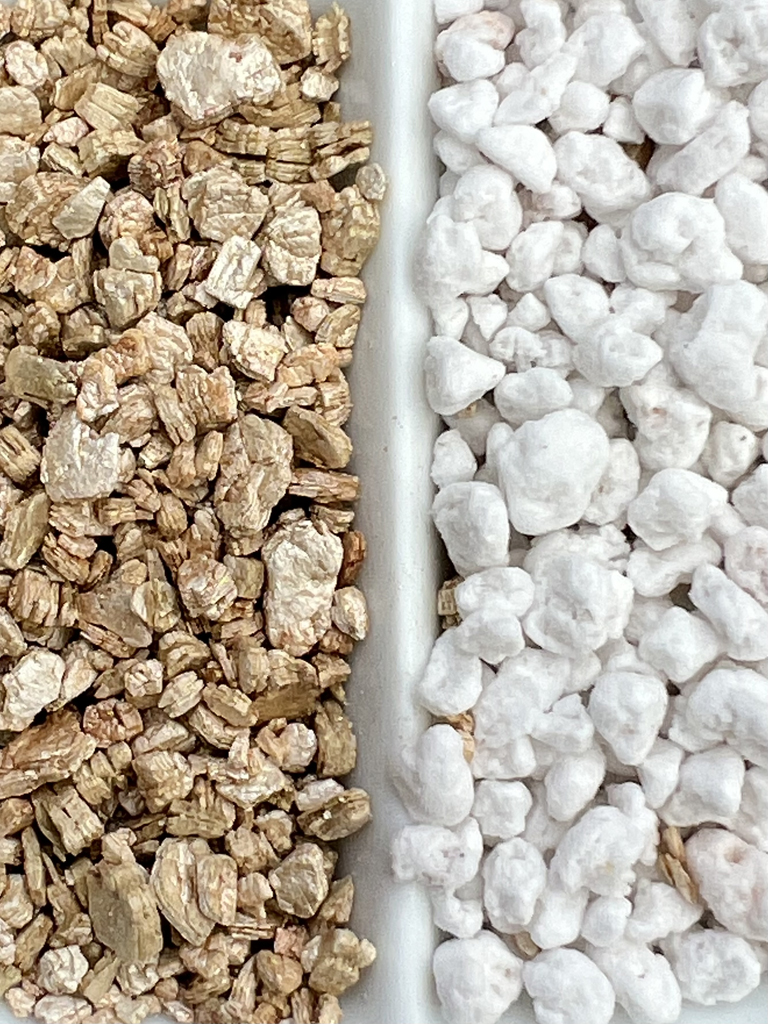Vermiculite vs Perlite: Both can be added to potting mixes but what is the difference between vermiculite and perlite?

Vermiculite vs Perlite – Photo © The Gourmantic Garden
What is Vermiculite

Vermiculite – Photo © The Gourmantic Garden
Vermiculite is a naturally occurring mineral, aluminium iron silicate which is heated to very high temperature to produce a lightweight material with a large surface area. Resembling flakes, the sand-coloured particles act by helping to retain moisture and regulating temperature during germination.
What is Vermiculite Best Used For
Vermiculite can be used in potting mixes and seed raising mixes and is ideal for use when starting seeds in particular very small seeds. After sowing the seeds, spread a fine layer of vermiculite over the seed raising mix and water it in to keep the seeds from drying out while germinating.

Vermiculite for Seed Raising- Photo © The Gourmantic Garden
Vermiculite can also be used for making seed raising mix by combining it with peat moss or coir and propagating sand. For a a soil-less seed raising medium, combine it with perlite and peat moss or coir.
What is Perlite

Perlite – Photo © The Gourmantic Garden
Perlite is a natural and neutral volcanic rock which has been treated to a very high temperature to produce a lightweight, white, porous material with a large surface area not unlike Styrofoam balls. When mixed with soil, it forms spaces which improve aeration and enable water to move freely.
What is Perlite Best Used For

Saffron Corms with Perlite in Soil for Aeration – Photo © The Gourmantic Garden
Perlite is used to provide aeration and facilitate drainage while maintaining good water retention. It helps improve compacted soil such as clay soil and reduce the chance of root rot. Use perlite where drainage is very important such as with Australian native plants, succulents and cacti, saffron and plants that don’t like being waterlogged.
Perlite can also be used to create a potting mix by combining it with coconut coir.
Vermiculite vs Perlite
In short, use vermiculite when starting seeds to help with moisture retention. Use perlite in potting mix to improve aeration and drainage.

